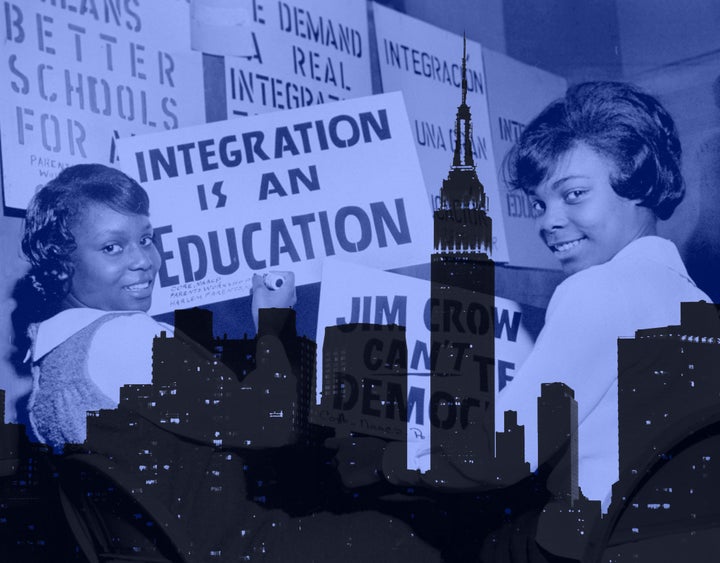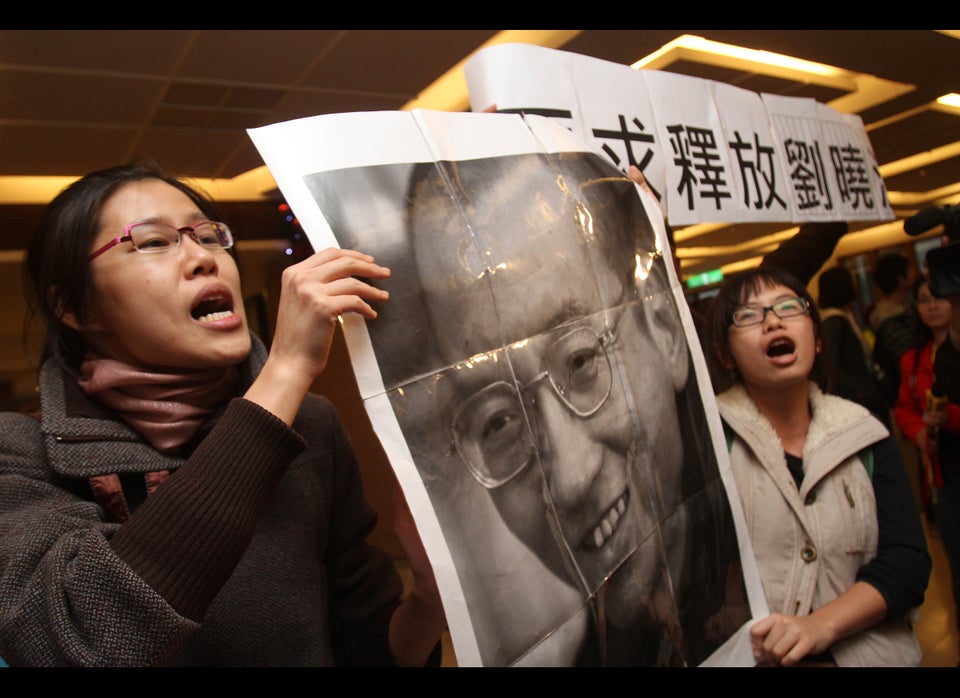
New York City didn't experience school desegregation in the 1960s and '70s like other metropolitan areas. Unlike in Little Rock, Arkansas, the National Guard was never brought in to make sure black students could safely enter an all-white school. Unlike closer hubs, like Boston, resistance to school desegregation never escalated to a citywide crisis. New York never saw a large-scale integration program, and it was never ordered by courts to make its schools more racially balanced.
But the largest school system in the country still had a devastating impact on one of the most controversial causes of the civil rights movement.
In historian Matthew F. Delmont's new book, Why Busing Failed: Race, Media, and the National Resistance to School Desegregation, he explains how New York City drove the rhetoric and resistance that allowed school desegregation to falter nationwide. In the late 1950s, years before any serious action was taken to desegregate most schools, New York City parents created the language that would lead opposition to racially mixed schools. This language -- which emphasizes the importance of neighborhood schools and opposition to citywide busing -- remains the weapon of choice for communities who fight integrated schools today.
The Supreme Court decision Brown v. Board of Education made formal school segregation illegal in 1954. Schools in northern cities, like New York, weren't segregated by law, but discriminatory housing patterns fostered racial divides all the same. It wasn't until years after Brown that serious efforts were made to desegregate schools, and New York resisted these attempts early and often.
In 1959, for instance, a few hundred black and Puerto Rican students were getting bused to white areas in Queens to break up hubs of racial isolation. It was a small-scale, one-way busing program, but parents went on the offensive. Hordes of white mothers held protests and wielded signs reading "bussing creates fussing" and "neighborhood schools for all." Parents emphasized the hardships their children would face if they had to get bused to schools outside their community and the importance of maintaining neighborhood schools as a way to foster community ties. Similar protests continued throughout the next several years.
Because these protests took place in the nation's media capital, the demonstrators' rhetoric spread far and wide. The demonstrations got legislators' attention, too. In the 1960s, a New York legislator helped craft the language in the Civil Rights Act of 1964 "that essentially blocked the federal government from having a role in pursuing school desegregation cases in the north," Delmont said.
Rhetoric from the New York protests became a model for how to oppose school desegregation without using overtly racist language, said Delmont."Busing" became a catch-all, euphemistic term for a complicated resistance to racially mixed schools. Similar language is still used today.
"New York, more than any other place, undercut school desegregation nationally," Delmont told The Huffington Post. "You can say you're opposing busing, and that resonated more powerfully, and sounded better and less racist than saying, 'We don’t want to send our kids to desegregated schools or we don’t want black kids sent to our schools' ... It was a language that got kicked up really well in media."
“New York, more than any other place, undercut school desegregation nationally.”
- Matthew F. Delmont
In making its case, Delmont's book rebuts the idea that Southern communities formed the bulk of opposition to Brown v. Board of Education. On the whole, the book looks at how a number of cities responded to the idea of busing, and how the media covered those debates.
"We usually point to Little Rock and Selma and Montgomery, these cities in the South, as being the hubs of resistance to integration," said Delmont. "But in fact it was just as adamant as the type of resistance we saw to school desegregation in the North."
Decades after Brown v. Board of Education, much of the national progress in desegregating schools has been undone, in part because of anti-busing sentiment. But overall -- despite the title of his book -- Delmont says the public should be slower to accept the idea that desegregation and busing "failed," instead of questioning what led to resistance to these ideas.
"Agreeing that busing and school desegregation failed makes it possible to dismiss the educational goals that were a pillar of the civil-rights movement and to dismiss the constitutional promise of equality endorsed by Brown, though it was never fully realized," wrote Delmont in a recent op-ed in the Atlantic. "This busing narrative is comforting because it authorizes people to accept the continuing racial and socioeconomic segregation of schools in the United States as inevitable and unchangeable."
Nowadays, New York state is home to the nation's most segregated schools.
“For several decades, the state has been more segregated for blacks than any Southern state, though the South has a much higher percent of African American students,” wrote the authors of a report from the UCLA Civil Rights Project in 2014.
For Delmont, that statistic is less than surprising.
"When you actually dig into it, some of the language is different and some of the ways in which they achieved segregation of schools is different, but the outcomes were often not very different than what was going on in the South," he said.
______
Rebecca Klein covers the challenges faced in school discipline, school segregation and the achievement gap in K-12 education. In particular, she is drilling down into the programs and innovations that are trying to solve these problems. Tips? Email Rebecca.Klein@huffingtonpost.com.
______

